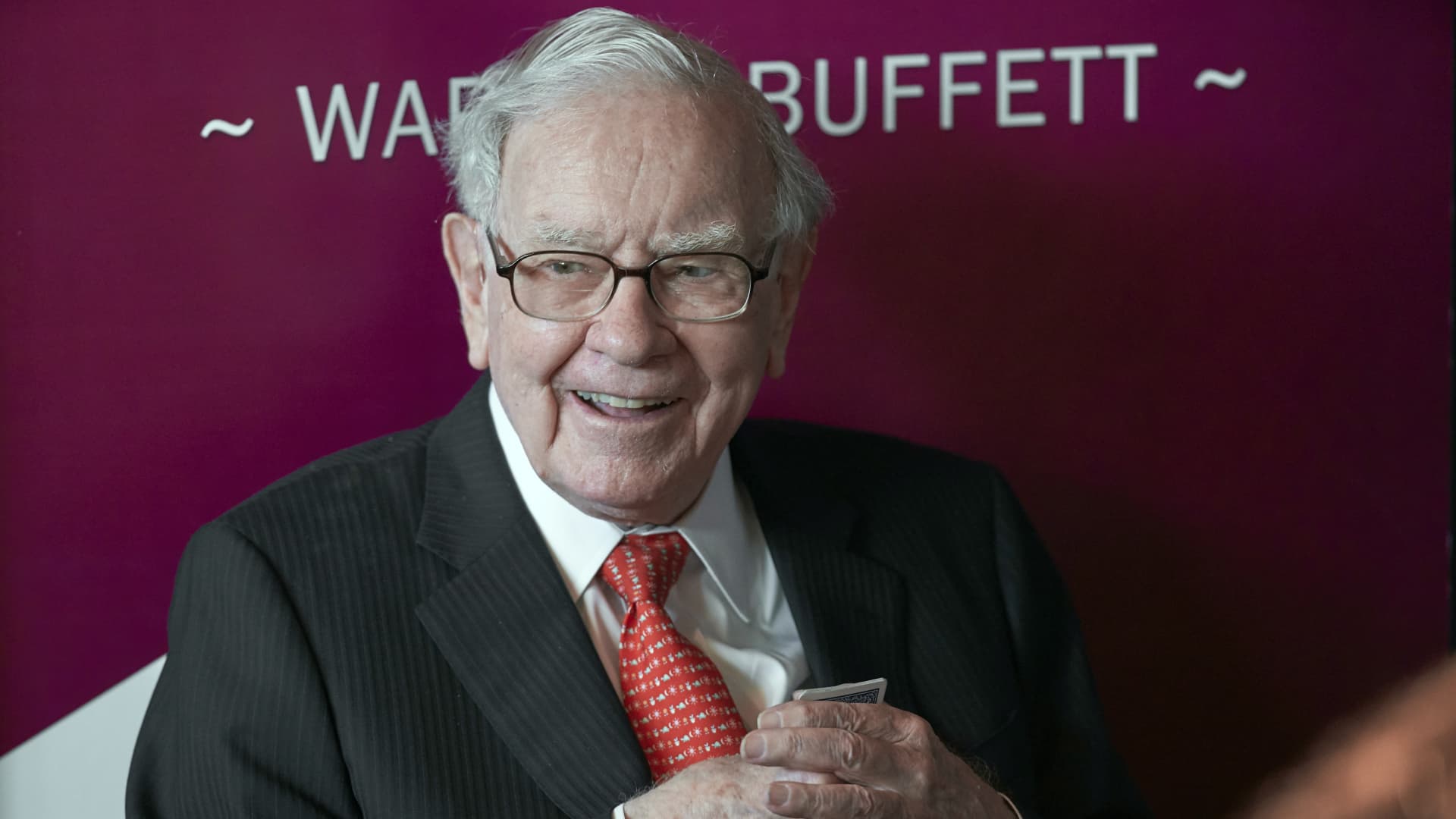U.S. stocks were higher Thursday, getting a bounce, after improving labor market data offset worrisome inflation data which had sent the Dow Jones Industrial Average down for a third day to its biggest one-day loss since January.
What’s driving the market?
-
The Dow Jones Industrial Average
DJIA,
+1.56%
rose 524 points, or 1.6%, to 34,113. -
The S&P 500
SPX,
+1.48%
gained 58 points, or 1.5%, to trade at 4,121. -
The Nasdaq Composite
COMP,
+0.96%
advanced 111 points, or 0.9%, to trade at 13,142.
On Wednesday, stocks tumbled sharply after a round of much stronger-than-expected April inflation data, with the Dow
DJIA,
+1.56%
dropping 681.50 points, or 2%, for its biggest one-day drop since January. The S&P 500
SPX,
+1.48%
fell 2.1% and the Nasdaq Composite
COMP,
+0.96%
tumbled 2.7%.
The declines left the Dow and S&P 500 at their lowest levels since early April, while the Nasdaq posted its lowest close since March 25, according to Dow Jones Market Data.
What’s driving the market?
Investors focused on U.S. weekly data on jobless claims, with applications for first-time benefits falling to a pandemic low of 473,000 in the week ended May 8 and took another round of U.S. inflation data in stride on Thursday, with stocks rising after April producer-price index jumped 0.6%, far above forecasts for a 0.3% rise. Year over year, wholesale inflation rose 6.2% versus a 4.2% rise in March.
“We are getting a nice little rebound,” said Kent Engelke, chief economic strategist at Capitol Securities Management, adding that if inflation runs at 3% to 4% annually, it should be a positive for Main Street America. “It may not be great for high-growth technology issues, but it is great for companies that produce things.”
“I think this is a reawakening of Main Street,” Engelke said. “That’s very evident today when you look at value versus growth.”
Concerns about inflation moved to front and center for investors on Wednesday after data showed prices at the consumer level rose by most in a month since 2009 and posted the largest year-over-year increase since 2008.
On Wednesday investors scrambled to unload stocks and other risky assets even though they had been bracing for a run of hot inflation data for months, said Keith Buchanan, portfolio manager at GLOBALT Investments, an Atlanta-based investment adviser with $2.4 billion in assets under management.
“As easy as it was to prognosticate that inflation would run hot, once we saw the data coming in it still caused a reaction that in six to nine months will probably look like an overreaction,” he said.
A rise in commodity prices, labor shortages, and the consumer prices data this week have boosted concerns that the U.S. Federal Reserve might consider withdrawing its pandemic crisis support despite its reassurances that the rise in inflation is expected to be transitory.
“The jury is still out,” said Randy Frederick, vice president of trading and derivatives for the Schwab Center for Financial Research, about whether Thursday’s push higher has staying power. “It is kind of like the market doesn’t know how to interpret recent economic data,” he said, adding that stocks could continue to be choppy through the summer as the recovery progresses and more people step away for vacations. “There aren’t a lot of upside catalysts in the hopper for the next couple of months,” he said.
The fall in stocks through Wednesday had pulled the S&P 500 index 4% off its record closing high last Friday, while the tech-heavy Nasdaq fell to about 8% below its April 29 record.
A much weaker-than-expected April jobs report last Friday had helped lift stock indexes to all-time-highs by pushing back expectations about when the Federal Reserve would signal a tapering of its bond buying program to December. But the CPI reading brought the timing back into focus, said Chris Weston, head of research at Pepperstone, in a note, while also stoking fears that the Fed, which has insisted that rising price pressures will prove transitory, risks making a policy error by holding off on pulling back support.
“Marry this with the exuberance and froth that’s discounted, and a market that has been forced to de-risk as options positioning has dictated, and you’ve seen volatility rise up across all markets,” he wrote.
Crypto assets also were in focus Thursday, with bitcoin
BTCUSD,
-10.15%
and other digital assets down sharply. The fall came after Tesla Inc. TSLA Chief Executive Elon Musk tweeted late Wednesday that the electric car maker would no longer accept bitcoin for payment due to environmental concerns around crypto mining.
See: Bitcoin bulls on social media reject Musk’s reasoning for halting crypto-based car sales
Which companies are in focus?
-
Boeing Co.
BA,
+1.04%
received approval from U.S. air-safety regulators to make fixes to an electrical problem that has grounded more than 100 of its 737 MAX jets, the company and a Federal Aviation Administration official said, paving the way for airlines to return them to passenger service within days, according to The Wall Street Journal. Shares of the Dow component rose1.4%. -
Shares of Sonos Inc.
SONO,
+7.08%
were up 5.9% after the maker of smart speakers late Tuesday reported a surprise profit. -
Dating-app company Bumble Inc.
BMBL,
-14.35%
late Wednesday reported first-quarter user and revenue growth and profit that topped expectations. Shares were off 14.7%. -
Shares of Coupang Inc.
CPNG,
-9.76%
were 9.2% lower after the South Korean e-commerce company reported its first quarterly results as a publicly traded company. -
Alibaba Group Holding Ltd.
BABA,
-5.91%
swung to a loss for its March quarter as the company faced an antimonopoly fine, but the Chinese e-commerce giant beat revenue expectations thanks to continued momentum for its online marketplaces. Shares were down 5.4%.
What are other markets doing?
-
The yield on the 10-year Treasury note
TMUBMUSD10Y,
1.658%
fell 3 basis points to 1.67%. Yields and bond prices move in opposite directions. -
The ICE U.S. Dollar Index
DXY,
-0.03%,
a measure of the U.S. currency against a basket of six major rivals, was up 0.1%. -
Oil futures fell sharply, with the U.S. benchmark
CL00,
-3.48%
closing down 3.4% to settle at $63.82 a barrel. Gold futures
GC00,
+0.22%
closed higher, up 0.1% to settle at $1,824 an ounce. -
European equities were lower in choppy trade, with the Stoxx 600
SXXP,
-0.14%
down 0.1% and London’s FTSE 100
UKX,
-0.59%
down 0.6%. -
In Asia, Hong Kong’s Hang Seng Index
HSI,
-1.81%
fell 1.8%, the Shanghai Composite
SHCOMP,
-0.96%
declined 1% and Japan’s Nikkei 225
NIK,
-2.49%
dropped 2.5%.




